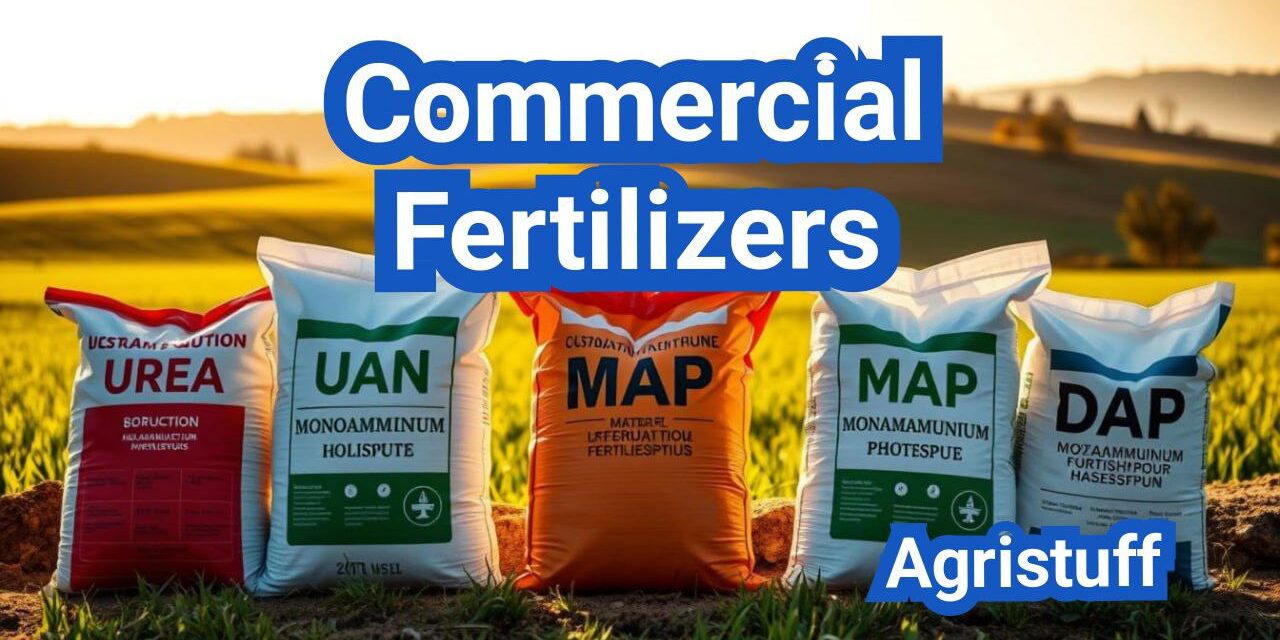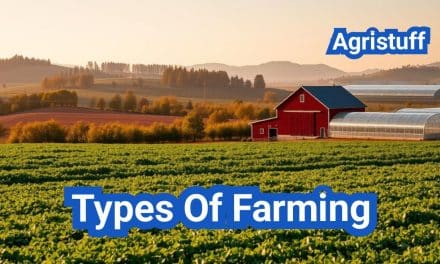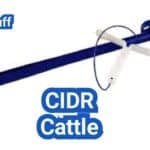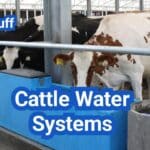Choosing the right type of fertilizer is crucial for optimal crop yield and soil health. With various types available, understanding their differences is key to making informed decisions.
Farmers and agricultural professionals often rely on urea, UAN, MAP, and DAP for their nutrient management needs. Each of these fertilizers has unique characteristics and application timing.
Understanding the composition and application timing of these types of fertilizers can significantly impact crop performance and environmental sustainability.
Key Takeaways
- Understanding the different types of fertilizers is crucial for optimal crop yield.
- Urea, UAN, MAP, and DAP are commonly used fertilizers with unique characteristics.
- Application timing significantly impacts crop performance and environmental sustainability.
- Choosing the right fertilizer depends on soil type, crop needs, and management practices.
- Proper nutrient management is key to achieving optimal crop yields and reducing environmental impact.
Understanding Commercial Fertilizers: Types and Terminology
Understanding the types and terminology of commercial fertilizers is crucial for effective agricultural practices.
Commercial fertilizers are substances added to soil to promote plant growth and fertility. They contain essential nutrients like nitrogen, phosphorus, and potassium, which are vital for crop development.
What Defines Commercial Fertilizer
Commercial fertilizers are defined by their nutrient content and formulation. They are designed to provide plants with the necessary nutrients for healthy growth. These fertilizers can be made from synthetic or natural materials and are available in various forms to suit different agricultural needs.
Common Commercial Fertilizer Forms: Dry vs. Liquid
Commercial fertilizers come in two primary forms: dry and liquid.
Dry fertilizers are granular or powdered products that are easy to store and transport. They are often applied to the soil surface or incorporated into the soil.
Liquid fertilizers, on the other hand, are solutions or suspensions that can be applied through irrigation systems or foliar sprays.
The choice between dry and liquid fertilizers depends on factors like crop type, soil conditions, and application equipment.
Dry fertilizers are generally more cost-effective and easier to handle.
Liquid fertilizers offer flexibility and precision in application.
Reading Fertilizer Labels and Analysis
Understanding fertilizer labels is crucial for selecting the right product. Fertilizer labels provide information on the nutrient content, including the N-P-K ratio (nitrogen-phosphorus-potassium). The label will also indicate the percentage of each nutrient present in the product.
| Nutrient | Function | Common Forms |
|---|---|---|
| Nitrogen (N) | Promotes leaf growth and development | Urea, Ammonium Nitrate |
| Phosphorus (P) | Supports root development and flower/fruit formation | Diammonium Phosphate (DAP), Monoammonium Phosphate (MAP) |
| Potassium (K) | Helps with overall plant health and resistance to disease | Potassium Chloride, Potassium Sulfate |
By understanding the different types of commercial fertilizers and how to read their labels, farmers and agricultural professionals can make informed decisions about fertilizer applications.
This leads to more efficient and effective crop management.
Nitrogen-Based Commercial Fertilizers

Nitrogen-based fertilizers are crucial for crop nutrition, providing essential nutrients for plant growth. These fertilizers come in various forms, each with its own set of properties and applications.
Urea: Properties and Best Uses
Urea is one of the most widely used nitrogen-based fertilizers. It has a high nitrogen content and is relatively inexpensive compared to other nitrogen sources. Urea is suitable for a variety of crops and can be applied in different ways, including broadcasting and banding.
Key characteristics of urea include:
- High nitrogen content (46% N)
- Versatile application methods
- Cost-effective
UAN Solutions: 28%, 30%, and 32%
UAN (Urea-Ammonium Nitrate) solutions are another popular form of nitrogen fertilizer. They contain a mixture of urea, ammonium nitrate, and water. UAN solutions are available in different concentrations, such as 28%, 30%, and 32% nitrogen.
| UAN Concentration | Nitrogen Content (%) |
|---|---|
| 28% UAN | 28 |
| 30% UAN | 30 |
| 32% UAN | 32 |
Ammonium Nitrate and Alternatives
Ammonium nitrate is a nitrogen-based fertilizer that has been used for many years. However, its use has declined in some areas due to safety concerns. Alternatives to ammonium nitrate include other nitrogen sources like urea and UAN.
Volatilization Risk Management
One of the challenges with using nitrogen-based fertilizers is managing the risk of volatilization. Volatilization occurs when nitrogen is lost to the atmosphere, reducing the effectiveness of the fertilizer. Techniques to minimize volatilization include using urease inhibitors and applying fertilizers at the right time.
By understanding the properties and applications of different nitrogen-based fertilizers, farmers can make informed decisions about their fertilizer programs.
Phosphorus-Based Commercial Fertilizers
Phosphorus is a vital nutrient for plant growth and development. As such, phosphorus-based commercial fertilizers play a critical role in modern agriculture, enhancing soil fertility and promoting healthy crop production.
Monoammonium Phosphate (MAP): Characteristics and Applications
Monoammonium phosphate (MAP) is a widely used phosphorus-based fertilizer. It contains a high concentration of phosphorus, making it an effective choice for a variety of crops. MAP is particularly beneficial for crops that require a significant amount of phosphorus during their early growth stages.
MAP for Calcareous Soils
Calcareous soils, characterized by their high calcium carbonate content, present unique challenges for phosphorus management. In such soils, the availability of phosphorus can be limited due to the formation of insoluble calcium phosphate compounds. MAP can be an effective choice for calcareous soils because it tends to form more soluble phosphorus compounds compared to other phosphorus sources.
Diammonium Phosphate (DAP): When to Choose It
Diammonium phosphate (DAP) is another popular phosphorus-based fertilizer. It not only supplies phosphorus but also provides nitrogen, making it a valuable resource for crops with high demands for both nutrients. DAP is often used as a starter fertilizer due to its ability to promote early root development and seedling growth.
DAP Starter Safety Considerations
While DAP is beneficial as a starter fertilizer, its application requires careful consideration to avoid potential seed injury. The risk of seed damage is particularly high when DAP is placed too close to the seed. Farmers should follow recommended application rates and placement guidelines to minimize this risk.
Triple Superphosphate and Other P Sources
Besides MAP and DAP, other phosphorus-based fertilizers are available, including triple superphosphate (TSP). TSP is known for its high phosphorus content, making it an efficient option for meeting the phosphorus needs of various crops. The choice among these phosphorus sources depends on factors such as soil type, crop requirements, and application methods.
| Fertilizer | Phosphorus Content (%) | Nitrogen Content (%) |
|---|---|---|
| MAP | 52 | 11 |
| DAP | 46 | 18 |
| TSP | 46 | 0 |
“The selection of phosphorus-based fertilizers should be guided by soil testing and crop nutrient requirements to ensure efficient use and minimize environmental impact.”
— Nutrient Management Guide
Potassium and Secondary nutrient Commercial Fertilizers

Beyond nitrogen and phosphorus, potassium and secondary nutrients are vital for plant health, and commercial fertilizers offer a range of options to meet these needs. Potassium, in particular, is crucial for overall plant development, influencing factors such as water balance, disease resistance, and overall plant vigor.
Potash and Potassium Chloride Options
Potash, often in the form of potassium chloride (KCl), is a widely used potassium fertilizer. It is highly soluble and provides a readily available source of potassium for crops. The choice between different potash products can depend on factors such as soil type, crop requirements, and the presence of other nutrients.
Potassium Chloride (KCl) is the most common potash fertilizer, containing about 60% K2O. It’s suitable for most crops and soils, although its high salt index can be a concern in certain situations.
Sulfur Additions: ATS and Elemental Sulfur
Sulfur is another critical secondary nutrient that can be applied through various commercial fertilizers. Ammonium Thiosulfate (ATS) and elemental sulfur are two common sulfur sources.
Ammonium Thiosulfate (ATS) is a liquid fertilizer that provides both nitrogen and sulfur. It’s particularly useful for correcting sulfur deficiencies and can be applied as a foliar spray or through irrigation systems.
Sulfur with UAN 28-0-0-5
Some UAN (Urea-Ammonium Nitrate) solutions are formulated with sulfur, such as UAN 28-0-0-5, which contains 28% nitrogen and 5% sulfur. This combination allows for the simultaneous application of nitrogen and sulfur, addressing multiple nutrient needs in a single pass.
“The addition of sulfur to nitrogen fertilizers can enhance nutrient use efficiency and support overall crop health.” –
Agricultural Research Journal
Micronutrient Packages and Blends
In addition to macronutrients and secondary nutrients, micronutrients play a crucial role in plant nutrition. Commercial fertilizers often include micronutrient packages or blends tailored to specific crop needs and soil conditions.
| Micronutrient | Common Forms | Crop Benefits |
|---|---|---|
| Zinc | ZnSO4, Zn chelates | Enhances enzyme activity, supports growth regulation |
| Boron | Borax, Solubor | Critical for cell wall development, pollination |
| Iron | FeSO4, Fe chelates | Essential for chlorophyll production, energy transfer |
Micronutrient blends can be customized based on soil test results and crop requirements. These blends are often applied in small quantities but can have a significant impact on crop performance and yield.
Soil Testing and Fertilizer Rate Determination
Effective fertilizer application starts with understanding the soil’s nutrient status. Soil testing provides critical information on the nutrient levels and overall health of the soil, enabling farmers to make informed decisions about fertilizer application rates and types.
Soil Test Interpretation and Calibration
Interpreting soil test results requires a thorough understanding of the testing methods and the calibration of the testing equipment. Different labs may use different extraction methods, and understanding these differences is crucial for accurate interpretation. Calibration involves ensuring that the soil test results correlate well with crop response to fertilizers. This step is essential for making reliable fertilizer recommendations.
Soil test interpretation also involves considering the soil type, pH, and other factors that influence nutrient availability. For instance, certain nutrients may become less available at high or low pH levels. By understanding these dynamics, farmers can adjust their fertilizer strategies to optimize nutrient uptake by crops.
Building vs. Maintenance Fertilization
Fertilizer strategies can be categorized into building and maintenance fertilization. Building fertilization aims to improve soil fertility over time, especially in soils that are initially low in certain nutrients. This approach involves applying higher rates of fertilizers to raise the soil’s nutrient status to an optimal level.
Maintenance fertilization, on the other hand, focuses on sustaining the soil’s fertility by replacing the nutrients removed by crops. This approach requires accurate estimates of nutrient removal rates and is crucial for long-term productivity and sustainability.
Variable Rate Technology and Prescription Maps
The advent of variable rate technology (VRT) and prescription maps has revolutionized fertilizer application. VRT allows for the precise application of fertilizers at varying rates across a field, based on the specific needs of different areas. Prescription maps are developed using data from soil testing, yield monitors, and other precision agriculture tools. These maps guide the VRT equipment to apply the right amount and type of fertilizer where it’s needed most.
By combining soil testing, careful interpretation, and advanced application technologies, farmers can significantly enhance the efficiency and effectiveness of their fertilizer programs. This not only improves crop yields but also contributes to more sustainable agricultural practices.
The 4R Nutrient Stewardship Framework
The 4R nutrient stewardship framework offers a comprehensive strategy for sustainable fertilizer management. This approach focuses on applying the right source of fertilizer at the right rate, time, and place to optimize crop production while minimizing environmental impact.
Right Source: Matching Fertilizer to Soil and Crop
Selecting the right source of fertilizer involves choosing a product that matches the soil type and crop requirements. Different fertilizers contain varying forms of nutrients, such as nitrogen, phosphorus, and potassium, which must be matched to the specific needs of the crop and soil conditions. For instance, using a fertilizer with the appropriate N-P-K ratio for a particular crop can enhance nutrient uptake efficiency.
Nutrient analysis of the soil and understanding the crop’s nutrient demand are critical steps in determining the right source. Soil testing helps identify nutrient deficiencies, allowing farmers to select fertilizers that address these specific needs.
Right Rate: Precision Application Amounts
Applying fertilizer at the right rate is crucial to avoid under or over-application. The right rate ensures that crops receive the necessary nutrients without excess that could lead to environmental pollution. Precision application amounts are determined based on soil testing, crop yield goals, and nutrient removal rates.
Using tools like soil testing and crop modeling can help in determining the optimal application rate. This precision helps in reducing waste and improving the economic viability of fertilizer application.
Right Time: Synchronizing with Plant Uptake
Timing fertilizer application to coincide with the crop’s nutrient uptake is essential for maximizing efficiency. The right time for application varies depending on the crop, climate, and growth stage. Synchronizing fertilizer application with plant demand reduces the risk of nutrient loss through leaching or runoff.
Splitting applications throughout the growing season can be an effective strategy to ensure nutrients are available when the crop needs them most.
Right Place: Strategic Placement for Maximum Efficiency
Placing fertilizer in the right place ensures that nutrients are available to the crop where and when they are needed. Strategic placement can involve banding, broadcasting, or fertigation, depending on the crop, soil type, and equipment available.
For example, banding fertilizers near the root zone can improve nutrient uptake efficiency by reducing soil-fertilizer contact and minimizing nutrient loss.
Application Methods for Commercial Fertilizer
The method of applying commercial fertilizer can significantly affect its efficacy and the overall health of the crop. Different application methods offer various benefits and are suited to different types of crops, soils, and farming practices.
Broadcast Applications with Commercial Spreaders
Broadcast application is one of the most common methods of applying commercial fertilizers. This technique involves evenly distributing the fertilizer over the entire soil surface using commercial spreaders. Broadcast applications are particularly effective for crops that have a high demand for nutrients across their entire root zone. To achieve uniform coverage, it’s crucial to calibrate the spreader correctly and consider factors like wind direction and speed.
Banding and Placement Techniques
Banding involves placing the fertilizer in a concentrated band near the seed or plant, which can be particularly beneficial for nutrients like phosphorus that are less mobile in the soil. This method enhances nutrient uptake efficiency by reducing soil-fertilizer contact and minimizing fixation. Banding can be done at various depths and distances from the seed, depending on the crop and soil type.
Phosphorus Banding Benefits
Phosphorus banding is a highly effective strategy for improving phosphorus use efficiency. By concentrating phosphorus near the roots, banding promotes early season growth and development. This is particularly important for crops like corn and soybeans, which have high phosphorus demands during their early growth stages.
Liquid Applications with Commercial Sprayers
Liquid applications involve applying fertilizers in a liquid form using commercial sprayers. This method offers flexibility and can be particularly useful for in-season applications or in situations where dry fertilizers are not practical. Liquid fertilizers can be applied through various irrigation systems, making them a versatile option for many farming operations.
Foliar Applications and Fertigation
Foliar applications involve spraying fertilizers directly on the leaves of plants, providing a quick boost of nutrients. This method is particularly useful for correcting micronutrient deficiencies or providing a rapid nutrient application during critical growth stages. Fertigation, the application of fertilizers through irrigation systems, is another efficient method that allows for precise control over nutrient delivery.
Starter Fertilizer Strategies
Optimizing starter fertilizer strategies is essential for maximizing crop potential. Starter fertilizers provide essential nutrients to young plants, promoting healthy growth and development.
Seed-Safe Starter Options
Choosing the right starter fertilizer is critical to avoid damaging seeds. Seed-safe starter options are designed to be less harmful to seeds while still providing necessary nutrients. These typically include fertilizers with lower salt indexes or those formulated to be safer for direct seed contact.
Some popular seed-safe starter fertilizers include monoammonium phosphate (MAP) and diammonium phosphate (DAP), which are known for their nutrient content and relatively low risk of seed injury when applied correctly.
2×2 Placement for Corn and Row Crops
The 2×2 placement technique involves placing fertilizer 2 inches to the side and 2 inches below the seed. This method is particularly effective for corn and other row crops, as it provides nutrients close to the roots without risking seed injury.
By positioning the fertilizer in this manner, crops can access essential nutrients during critical early growth stages, enhancing overall yield potential.
Fertilizer Salt Index and Avoiding Seed Injury
The fertilizer salt index is a measure of the potential for fertilizers to cause seed injury due to high salt concentrations. Fertilizers with high salt indexes, such as those containing high levels of nitrogen or potassium, can dehydrate seeds or young seedlings, leading to injury or reduced germination.
Salt Injury Limits by Crop Type
Understanding the salt tolerance of different crops is crucial for selecting the appropriate starter fertilizer and application method to minimize the risk of salt injury.
Sidedress and In-Season Applications

Sidedressing involves applying fertilizer during the growing season.
This approach enables farmers to fine-tune their fertilizer applications.
It ensures that crops receive the necessary nutrients at the right time.
UAN Sidedress Timing and Equipment
UAN (Urea-Ammonium Nitrate) solutions are commonly used for sidedress applications due to their flexibility and ease of application. The timing of UAN sidedress applications is critical, typically occurring when crops are in their rapid growth phase. Equipment such as toolbar-mounted applicators and high-clearance sprayers are used to apply UAN solutions effectively.
Split Nitrogen Application Benefits
Split nitrogen applications involve dividing the total nitrogen rate into multiple applications throughout the growing season. This strategy helps in matching nitrogen supply with crop demand, reducing the risk of nitrogen loss, and improving nitrogen use efficiency. It allows farmers to adjust nitrogen rates based on crop response and weather conditions.
Y-Drop and Other Precision Placement Tools
Y-Drop applicators are a type of precision placement tool used for sidedress nitrogen applications. They involve dropping nitrogen fertilizer directly to the root zone, typically between the rows of crops like corn. This method enhances nitrogen uptake efficiency by placing the fertilizer closer to the roots.
Tissue Testing to Guide In-Season Decisions
Tissue testing is a valuable tool for guiding in-season fertilizer decisions. By analyzing the nutrient content of plant tissues, farmers can assess the nutrient status of their crops. This information helps in determining the need for additional fertilizer applications and adjusting the rate and timing of subsequent applications.
| Application Method | Description | Benefits |
|---|---|---|
| UAN Sidedress | Application of UAN solution during the growing season | Flexibility in application timing, efficient nitrogen delivery |
| Split Nitrogen Application | Dividing nitrogen application into multiple doses | Improved nitrogen use efficiency, reduced nitrogen loss |
| Y-Drop Applicators | Precision placement of nitrogen fertilizer near the root zone | Enhanced nitrogen uptake efficiency |
Stabilizers and Enhancers for Commercial Fertilizers

Commercial fertilizers are often enhanced with stabilizers and enhancers to improve their effectiveness.
These additives play a crucial role in ensuring that fertilizers are utilized efficiently by crops.
Urease Inhibitors: NBPT and Beyond
Urease inhibitors, such as N-(n-butyl) thiophosphoric triamide (NBPT), are used to slow down the conversion of urea into ammonia, thereby reducing nitrogen loss through volatilization. This allows more nitrogen to be available to the crop, improving fertilizer efficiency.
Nitrification Inhibitors: Nitrapyrin and DCD
Nitrification inhibitors, including nitrapyrin and dicyandiamide (DCD), work by slowing the conversion of ammonium into nitrate, reducing the risk of nitrogen loss through leaching and denitrification. This helps maintain nitrogen in the soil for longer periods, making it more available to crops.
Polymer Coatings and Controlled-Release Technology
Polymer coatings and controlled-release technologies are designed to release nutrients slowly over time, matching the nutrient uptake pattern of crops. This approach can improve fertilizer efficiency and reduce the frequency of application.
Ammonium Thiosulfate (ATS) with UAN
Ammonium thiosulfate (ATS) is often used in combination with urea ammonium nitrate (UAN) solutions. ATS acts as a urease inhibitor and can also provide sulfur, an essential nutrient for crops. The combination of ATS with UAN can enhance the effectiveness of nitrogen fertilizers.
| Product | Function | Benefits |
|---|---|---|
| Urease Inhibitors (e.g., NBPT) | Slow down urea conversion to ammonia | Reduce N loss, improve fertilizer efficiency |
| Nitrification Inhibitors (e.g., Nitrapyrin, DCD) | Slow down ammonium conversion to nitrate | Reduce N loss through leaching and denitrification |
| Polymer Coatings/Controlled-Release | Slow release of nutrients over time | Improve fertilizer efficiency, reduce application frequency |
| Ammonium Thiosulfate (ATS) with UAN | Urease inhibition and sulfur provision | Enhance N fertilizer effectiveness, provide essential sulfur |
Environmental Management of Commercial Fertilizer
Effective environmental management of commercial fertilizers is crucial for sustainable agriculture.
This involves implementing strategies to minimize the environmental impact of fertilizer application.
Reducing Volatilization from Urea
Urea is a widely used nitrogen fertilizer that can be susceptible to volatilization, leading to nitrogen loss. Techniques to reduce volatilization include using urease inhibitors and incorporating urea into the soil.
Rainfall Incorporation Requirements
Adequate rainfall or irrigation is necessary to incorporate urea into the soil, reducing the risk of volatilization. The amount of rainfall required can vary depending on soil type and conditions.
Preventing Nutrient Runoff
Nutrient runoff from agricultural fields can lead to water pollution, affecting aquatic ecosystems. Strategies to prevent runoff include implementing conservation tillage, buffer strips, and cover crops.
Buffer Zones and Environmental Setbacks
Establishing buffer zones around water bodies and sensitive ecosystems can help mitigate the environmental impact of fertilizer application. These buffers can be composed of vegetation that helps to absorb nutrients and sediments.
NRCS Nutrient Management Plan 590
The NRCS Nutrient Management Plan 590 is a conservation plan that outlines best management practices for nutrient application. It aims to balance the need for crop nutrition with environmental protection, ensuring sustainable agricultural practices.
Commercial Fertilizer vs. Organic Alternatives
Commercial fertilizers and organic fertilizers represent two distinct approaches to soil fertilization, each with its unique characteristics and benefits. The decision between these two options depends on various factors, including soil type, crop requirements, and environmental considerations.
Nutrient Availability Comparisons
One of the primary differences between commercial fertilizers and organic alternatives lies in their nutrient availability. Commercial fertilizers typically provide immediate nutrient availability due to their highly soluble nature. For instance, urea and ammonium nitrate are quickly absorbed by plants, offering rapid correction of nutrient deficiencies.
In contrast, organic fertilizers, such as compost or manure, release nutrients more slowly as they are broken down by microbial activity. This slow release can provide a more sustained nutrient supply over time but may not address immediate deficiencies.
Cost-Benefit Analysis
When evaluating commercial fertilizers versus organic alternatives, a thorough cost-benefit analysis is essential. Commercial fertilizers are often cheaper upfront and can provide quick returns due to their immediate nutrient availability. However, their long-term use can lead to soil degradation and environmental issues, potentially increasing costs over time.
Organic alternatives, while sometimes more expensive initially, can offer long-term benefits such as improved soil health and reduced environmental impact. A cost-benefit analysis should consider not only the direct costs but also the indirect benefits and potential long-term savings.
- Initial cost of fertilizers
- Long-term soil health benefits
- Environmental impact
- Potential for long-term cost savings
Integrated Approaches: Combining Commercial and Organic
Many agricultural operations are now adopting integrated approaches that combine the benefits of both commercial fertilizers and organic alternatives. This can involve using commercial fertilizers for immediate nutrient needs while incorporating organic amendments to improve soil health and structure over time.
By integrating both types of fertilizers, farmers can potentially maximize crop yields while minimizing environmental impact. This approach requires careful planning and management but can offer a more sustainable and resilient agricultural system.
- Assess soil nutrient needs and choose appropriate fertilizers.
- Use commercial fertilizers for immediate nutrient correction.
- Incorporate organic amendments to improve soil health.
- Monitor and adjust the integrated approach as needed.
Regulatory Considerations for Commercial Fertilizer

Understanding the regulatory landscape is essential for those involved in the commercial fertilizer industry.
Regulations surrounding commercial fertilizers are multifaceted, covering aspects such as licensing, state-specific requirements, and proper storage and handling practices.
Commercial Fertilizer Licensing Requirements
To operate within the commercial fertilizer sector, businesses must obtain the necessary licenses. Licensing requirements typically involve meeting specific criteria related to the composition and labeling of fertilizers, as well as demonstrating competency in handling and application techniques. The process ensures that only qualified entities are authorized to distribute and apply commercial fertilizers.
State-Specific Regulations and Reporting
Regulations governing commercial fertilizers vary significantly from one state to another. State-specific regulations may dictate the types of fertilizers allowed, application rates, and environmental safeguards. Companies must comply with these regulations, which often include reporting requirements to ensure transparency and accountability.
Storage and Handling Requirements
Proper storage and handling of commercial fertilizers are critical to prevent accidents and environmental contamination. Facilities must be designed and managed to safely store fertilizers, and personnel must be trained in handling procedures. This includes adhering to guidelines for containment, labeling, and disposal of fertilizers and their containers.
By navigating these regulatory considerations, businesses can ensure compliance with the law while maintaining a safe and responsible operation. This not only protects the environment and public health but also supports the sustainable use of commercial fertilizers in agricultural practices.
Economic Considerations in Fertilizer Selection
Fertilizer selection is not just about choosing the right product; it’s also about making economically sound decisions. Farmers and agricultural businesses must consider various economic factors to maximize their returns on investment.
Calculating Cost Per Pound of Nutrient
To make informed decisions, it’s crucial to calculate the cost per pound of nutrient. This involves understanding the nutrient content of different fertilizers and their respective prices. For instance, when comparing urea and ammonium nitrate, one must consider not just the nitrogen content but also the cost per ton of each product. The cost per pound of nitrogen can vary significantly between these two products, depending on their nitrogen concentration and market price.
Price Trends and Purchasing Strategies
Understanding price trends is vital for timing fertilizer purchases. Prices can fluctuate based on market demand, production costs, and global events. A savvy purchasing strategy might involve buying in bulk during periods of low demand or hedging against future price increases. Farmers and agricultural businesses should stay informed about market trends and consider various purchasing strategies to optimize their fertilizer costs.
Return on Investment Calculations
Conducting return on investment (ROI) calculations isem> is essential to justify the expenditure on fertilizers. This involves assessing the yield increases or quality improvements resulting from fertilizer application against the costs incurred. By doing so, farmers can determine whether their fertilizer investments are yielding positive returns.
“A well-planned fertilizer program can significantly enhance crop yields and quality, thereby improving the overall profitability of farming operations.”
Effective ROI analysis helps in making data-driven decisions for future fertilizer applications.
Specialized Applications for Different Cropping Systems
Different cropping systems require tailored fertilizer applications to maximize yield and efficiency. The choice of fertilizer and its application method can significantly impact crop performance, depending on whether the cropping system is no-till, irrigated, or dryland.
No-Till Residue Management and Fertilization
No-till farming systems present unique challenges for fertilizer application due to the presence of crop residue on the soil surface. Effective residue management is crucial to ensure that fertilizers are delivered to the soil without being immobilized or lost on the residue.
Strategies for No-Till Fertilization:
- Use of nitrogen stabilizers to reduce volatilization
- Placement of fertilizers below the residue layer
- Application of fertilizers during periods of low residue decomposition
Irrigated vs. Dryland Strategies
The decision between irrigated and dryland farming affects fertilizer application strategies. Irrigated systems allow for more precise control over water application, which can be synchronized with fertilizer application to enhance uptake efficiency.
| Aspect | Irrigated | Dryland |
|---|---|---|
| Water Control | High | Low |
| Fertilizer Timing | Can be synchronized with irrigation | Dependent on rainfall |
Specialty Crop Considerations
Specialty crops, such as fruits, vegetables, and nuts, have specific nutrient requirements that differ from those of commodity crops. Understanding these requirements is essential for optimizing fertilizer applications.
Key Considerations for Specialty Crops:
- Nutrient requirements specific to the crop
- Sensitivity to certain nutrients or fertilizers
- Impact of soil conditions on nutrient availability
Building a Sustainable Fertilizer Program
Effective fertilizer management is crucial for a sustainable agricultural practice. By understanding the different types of commercial fertilizers, such as urea, UAN, MAP, and DAP, farmers can make informed decisions about their fertilizer program.
A well-planned fertilizer program not only enhances crop yields but also minimizes environmental impact. Implementing the 4R Nutrient Stewardship Framework – using the right source, right rate, right time, and right place – is essential for achieving a sustainable fertilizer program.
By adopting best management practices, such as soil testing, precision application, and using stabilizers and enhancers, farmers can optimize their fertilizer use. This approach contributes to a more sustainable agricultural system, balancing economic, environmental, and social considerations.
As the agricultural industry continues to evolve, developing a sustainable fertilizer program is key to ensuring long-term productivity and environmental stewardship. By integrating fertilizer management into overall agricultural practices, farmers can achieve a more efficient and sustainable farming operation.
FAQ
What is commercial fertilizer, and why is it important for crop production?
Commercial fertilizer refers to synthetic or manufactured products designed to provide essential nutrients to crops, promoting healthy growth and maximizing yields. It’s crucial for crop production as it helps address nutrient deficiencies in the soil, ensuring optimal plant development.
What are the main types of commercial fertilizers, and how do they differ?
The primary types of commercial fertilizers include nitrogen-based (e.g., urea, UAN), phosphorus-based (e.g., MAP, DAP), and potassium-based (e.g., potash, potassium chloride) fertilizers. They differ in their nutrient composition, application methods, and suitability for various crops and soil types.
How do I choose the right commercial fertilizer for my crops?
To select the appropriate commercial fertilizer, consider factors such as soil type, crop nutrient requirements, and the timing of application. Soil testing can help determine nutrient deficiencies, while understanding crop nutrient needs and application timing ensures optimal fertilizer use.
What is the 4R nutrient stewardship framework, and how does it apply to commercial fertilizer use?
The 4R nutrient stewardship framework emphasizes applying the right source of fertilizer at the right rate, time, and place. This approach optimizes nutrient use efficiency, minimizes environmental impact, and promotes sustainable agriculture practices.
How can I reduce the environmental impact of commercial fertilizer applications?
Strategies to minimize environmental impact include using precision application techniques, implementing buffer zones, and adopting conservation tillage practices. Additionally, selecting fertilizers with stabilizers or enhancers, such as urease inhibitors, can help reduce nutrient losses.
What are the benefits and drawbacks of using commercial fertilizers versus organic alternatives?
Commercial fertilizers offer rapid nutrient availability and precise formulation, but may have higher environmental risks. Organic alternatives, while potentially more sustainable, can have variable nutrient content and slower release rates. Integrated approaches combining both types can optimize benefits while minimizing drawbacks.
How do I calculate the cost per pound of nutrient in commercial fertilizers?
To calculate the cost per pound of nutrient, divide the total cost of the fertilizer by the total pounds of nutrient it contains. This analysis helps compare the economic efficiency of different fertilizer products and informs purchasing decisions.
What are the key considerations for storing and handling commercial fertilizers?
Proper storage and handling practices include storing fertilizers in well-ventilated, dry areas, away from incompatible materials, and following label instructions for handling and application. This ensures safety and maintains product efficacy.
How can I determine the optimal rate and timing for commercial fertilizer applications?
Optimal rate and timing are determined by soil testing, crop nutrient requirements, and environmental conditions. Using tools like variable rate technology and prescription maps can help tailor applications to specific field conditions.
What role do stabilizers and enhancers play in commercial fertilizers?
Stabilizers and enhancers, such as urease inhibitors and nitrification inhibitors, help minimize nutrient losses by reducing volatilization, leaching, or denitrification. They can improve the efficiency and effectiveness of commercial fertilizers.
Conclusion of: Commercial Fertilizer Guide
What “commercial fertilizer” means—and why it still matters
In U.S. crop systems, commercial fertilizer simply refers to manufactured nutrient products that supply plant-available nitrogen (N), phosphorus (P), potassium (K) and other essentials in predictable analyses so you can hit agronomic targets efficiently and consistently across acres.
In U.S. crop systems, commercial fertilizer simply refers to manufactured nutrient products that supply plant-available nitrogen (N), phosphorus (P), potassium (K) and other essentials in predictable analyses so you can hit agronomic targets efficiently and consistently across acres; managing commercial fertilizer within a nutrient plan is core to profitable, compliant production. USDA-NRCS: Nutrient Management (4Rs/SMART)
The big four commercial fertilizer types covered in this guide
This guide focuses on the most common commercial fertilizer sources used across U.S. row crops: urea (46-0-0), liquid UAN (typically 28–32% N), MAP (11-52-0), and DAP (18-46-0), each with distinct handling, placement, and timing considerations that determine ROI and environmental performance. Purdue Extension: Types & Uses of Nitrogen Fertilizers
Use the 4R framework to pick and place commercial fertilizer
The most reliable way to choose and schedule commercial fertilizer is the 4R/SMART approach—Right Source, Right Rate, Right Time, Right Place—tailored by soil tests, yield goals, and field risk (slope, drainage, distance to water), which improves nutrient use efficiency and reduces losses. USDA-NRCS: What is Nutrient Management?
Urea (46-0-0): the workhorse commercial fertilizer N source
As a commercial fertilizer urea is valued for high analysis and versatility, but it hydrolyzes rapidly on the soil surface; incorporate with tillage, irrigation, or timely rain so ammonium forms below the surface and ammonia loss is minimized. As little as ~0.25–0.50 inch of rainfall within ~2 days is commonly cited to reduce volatilization risk. University of Minnesota Extension: Urea
Managing urea losses: timing rain, banding, or inhibitors
When scheduling commercial fertilizer urea, target a forecast rain of ~0.25–0.50 inch within ~48 hours, or incorporate/band promptly; in high-residue or high-pH surface conditions, urease inhibitors can help when timely incorporation isn’t assured. Iowa State Extension: Rainfall needed to prevent urea loss
Urease & nitrification inhibitors with commercial fertilizer urea/UAN
Adding the right stabilizer to commercial fertilizer can be worth it under loss-prone conditions: NBPT (urease inhibitor) slows urea hydrolysis at the surface; nitrapyrin/DCD (nitrification inhibitors) slow conversion of ammonium to nitrate, lowering leaching/denitrification risk in wet springs. NDSU Extension: Nitrogen Extenders & Additives
UAN (28–32% N): flexible liquid commercial fertilizer
Liquid UAN is a blended commercial fertilizer that’s roughly half urea and half ammonium nitrate; it can be streamed/dribbled in bands, injected, or Y-dropped, but because of its urea component it can still volatilize if left on the surface—banding or incorporation improves reliability. Iowa State Extension: Managing fertilizer products
Cold-weather handling of UAN as a commercial fertilizer
When storing or transporting commercial fertilizer UAN, remember salting-out temperatures: 32-0-0 can crystallize near 32°F while 28-0-0 tolerates colder conditions (≈0°F), and 28-0-0-5 adds sulfur (ATS) for sandy, low-OM soils where S response is likely. Mississippi State Extension: Fluid Fertilizers (UAN weights & salt-out)
Avoid risky fall timing with UAN as a commercial fertilizer
Because a portion of UAN is already nitrate at application, fall surface applications of this commercial fertilizer are discouraged in many small grain systems due to leaching/denitrification risk before uptake. University of Minnesota Extension: Fertilizing Wheat (UAN fall caution)
MAP vs. DAP: which commercial fertilizer P source fits your soil?
For phosphorus, the MAP (11-52-0) vs. DAP (18-46-0) choice in commercial fertilizer often hinges on local soil pH and seed safety: MAP tends to acidify its micro-zone while DAP is initially alkaline, which can matter in calcareous, high-pH soils. UMN Extension Crop News (2025): Differences in MAP vs DAP
Soil-pH interactions with commercial fertilizer MAP and DAP
Research shows the granule zone around commercial fertilizer MAP becomes acidic while DAP becomes basic; that’s why agronomists often prefer MAP on high-pH, calcareous soils and may use DAP more freely on acidic soils, assuming safe placement. University of Minnesota Extension: Understanding P Fertilizers
Banding P: improving early uptake from commercial fertilizer
Because P barely moves in soil, banding commercial fertilizer P (MAP/DAP) 2×2 or near the seed can increase early-season availability and reduce fixation in high-fixing soils, especially in cool, wet springs. Iowa State Extension: Deep-band P & K responses
Seed safety, salt index, and ammonia with commercial fertilizer
Starter blends that contact seed must consider the salt index and free-ammonia potential of commercial fertilizer; sources with higher salt index or that release ammonia near seed increase burn risk, so follow conservative in-furrow limits and favor safer placements. UMN Extension: Banding Fertilizer with Corn Seed (salt index)
Why many starters favor MAP over DAP as a commercial fertilizer
In starters, MAP is commonly chosen as the commercial fertilizer P source because DAP’s initial alkalinity can release free NH3 near the granule; free ammonia is toxic to seedlings, so keep DAP away from the seed or reduce rates and increase distance. Penn State Extension: Nitrogen Fertilization of Corn (starter cautions)
How much product? Converting recommendations for commercial fertilizer
To translate soil test recommendations into commercial fertilizer amounts, divide nutrient pounds needed by the product’s nutrient fraction (e.g., 50 lb N ÷ 0.46 = 109 lb urea/acre); this simple proportion keeps rates accurate across products. UMN Extension: Calculating Fertilizer Rates (how-to)
Start with soil tests, calibrated crop guides—then layer commercial fertilizer
Use current soil tests and region-calibrated nutrient guides to set commercial fertilizer rates, adjusting for yield goals and removal; many land-grant guides also provide equations and tables for broadcast vs. banded applications. SDSU Extension: Fertilizer Recommendation Guide
Environmental rules that shape timing and placement of commercial fertilizer
State 590 standards and NRCS guidance restrict surface application of commercial fertilizer when runoff risk is high (frozen/snow-covered, saturated topsoil) and call for setbacks from water features—plan timing and placement accordingly. USDA: NRCS Practice Standard 590 (factsheet)
Runoff and water quality: managing commercial fertilizer responsibly
Over-application or poorly timed commercial fertilizer increases the risk of nutrient losses to air and water—using the 4Rs, buffers, cover crops, and appropriate setbacks reduces downstream nutrient pollution. U.S. EPA: Agriculture & Nutrient Pollution
No-till/high-residue nuance: surface UAN & urea as commercial fertilizer
Surface-applied commercial fertilizer UAN or urea on heavy residue is more prone to volatilization and tie-up on residue; dribble-banding or injection typically outperforms broadcast in these systems. University of Missouri Extension: Best Management Practices for N
Cold storage & winterizing plans for liquid commercial fertilizer
Salting-out matters for liquid commercial fertilizer: 32-0-0 salts out near 32°F while 28-0-0 tolerates colder temps, so winter stock often favors 28-0-0; check product COAs and protect tanks/mixes from stratification. Mississippi State Extension: Fluid Fertilizers (salt-out guidance)
Economics: cost per unit nutrient, not just price per ton of commercial fertilizer
Always compare commercial fertilizer options on $/lb nutrient delivered (e.g., $/lb N, $/lb P2O5), and consider application method, stabilizer costs, and expected efficiency under your field risks. Cornell Cooperative Extension: Fertilizer Calculations
Common mistakes with commercial fertilizer—and how to avoid them
Frequent pitfalls include surface urea ahead of a dry/windy spell, high-salt starters in-furrow, DAP too close to seed, and fall UAN on vulnerable soils; a risk-aware plan for commercial fertilizer timing and placement prevents most issues. Montana State: Urea Volatilization—What We’ve Learned
Put it together: a season-long plan for commercial fertilizer
Combine soil tests, 4R tactics, stabilizers where justified, and placement suited to tillage and residue to keep commercial fertilizer working for yield while meeting stewardship expectations and state 590 standards. USDA-NRCS: Nutrient Management overview
Regional/niche adjustments for commercial fertilizer
Fine-tune commercial fertilizer choices for local crops, soils, and climate—e.g., cooler northern springs may favor banded P and delayed N sidedress, while sandy/coastal plains may prioritize sulfur with UAN (28-0-0-5) and nitrification inhibitors before wet periods. Mississippi State Extension: Fluid Fertilizers (28-0-0-5)
Final thought
Profitable, resilient nutrient programs don’t depend on a single product—they depend on matching each commercial fertilizer to your soils, weather windows, placement equipment, and regulatory context so more nutrients end up in the crop and fewer are lost. USDA-NRCS: Nutrient Management (plan with the 4Rs)
Sources & References
• USDA-NRCS. Nutrient Management (SMART/4Rs).
• USDA-NRCS. Nutrient Management overview.
• University of Minnesota Extension. Fertilizer urea.
• Iowa State University Extension. Late spring N considerations (rainfall to limit volatilization).
• North Dakota State University Extension. Nitrogen extenders & additives (NBPT/nitrapyrin/DCD).
• Iowa State University Extension. Management needs of fertilizer products (UAN handling).
• Mississippi State University Extension. Fluid Fertilizers (weights, salt-out, ATS).
• University of Minnesota Extension. Fertilizing Wheat (UAN fall caution).
• UMN Extension Crop News (2025). Differences in MAP vs DAP.
• University of Minnesota Extension. Understanding phosphorus fertilizers (MAP acidic / DAP basic zones).
• Iowa State University Extension. Corn & soybean responses to deep-band P and K.
• UMN Extension. Banding fertilizer with corn seed (salt index tables & guidance).
• Penn State Extension. Nitrogen Fertilization of Corn (starter source cautions).
• UMN Extension. Calculating fertilizer rates (how-to).
• SDSU Extension. Fertilizer Recommendation Guide.
• USDA factsheet. NRCS Practice Standard 590 (application restrictions & setbacks).
• U.S. EPA. Sources & Solutions—Agriculture (nutrient pollution).
• University of Missouri Extension. BMPs for Nitrogen in Missouri.
• Montana State University. Urea Volatilization—What We’ve Learned.
• Cornell Cooperative Extension. Fertilizer Calculations.










